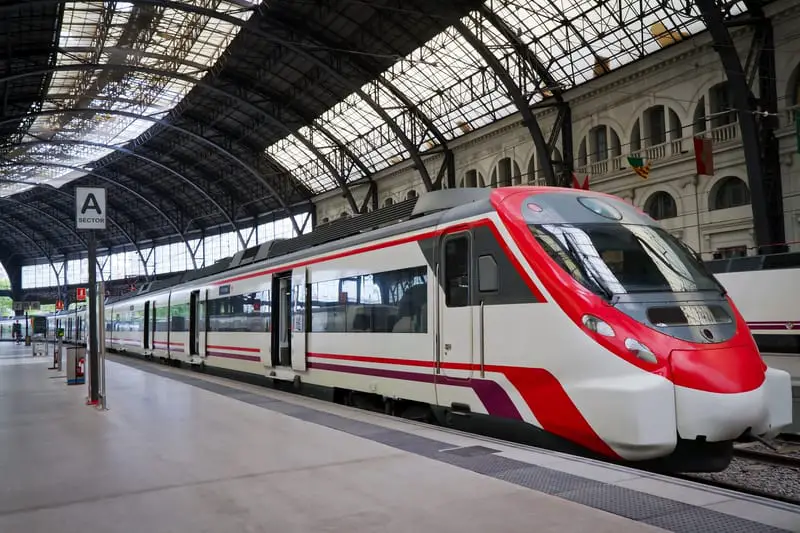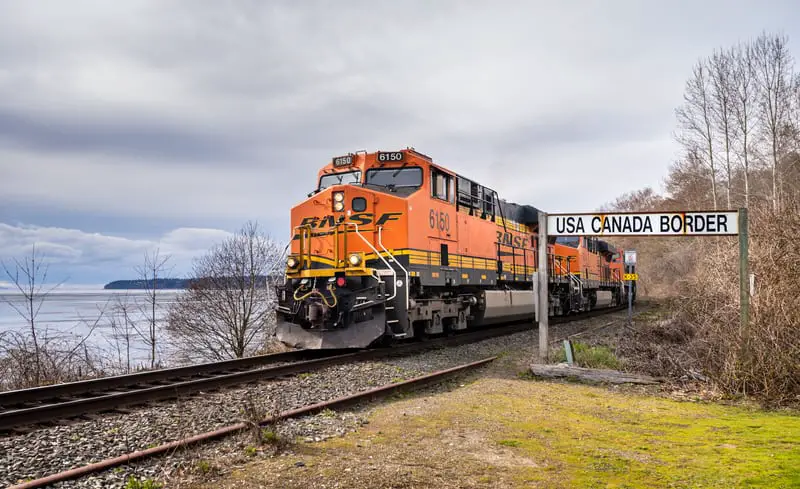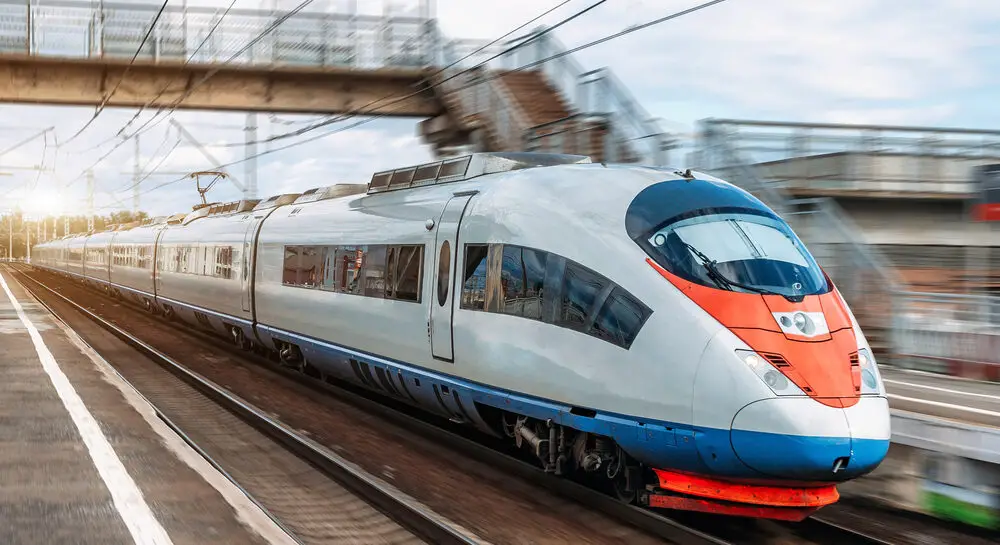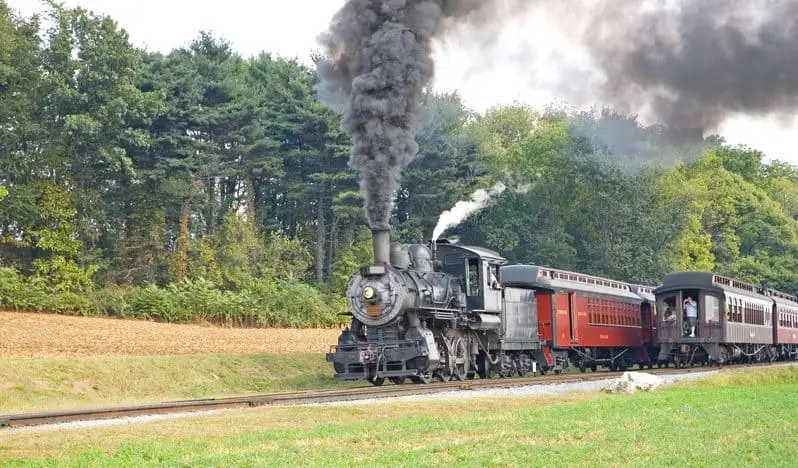
As exciting as trains are, they are more complex to build or purchase. More is required than simply constructing rails and buying locomotives and passenger cars.
An entire team of mechanics, engineers, conductors, and others is needed to ensure everything operates well. Still, with that in mind, how much do trains cost to buy?
The average cost for a modern train is $4,750,000. However, more affordable options exist, such as diesel locomotives, which start at a price point of $2,000,000. On the other end of the spectrum, electric trains can cost up to $7,500,000.
Nevertheless, the vast differences across trains make it hard to determine a specific number accurately. So instead, it’s crucial to concentrate on the potential cost of your freight cars and assess your entire cost based on the type of train.
So, with that said, let’s look at the likely costs of commonly found types of trains.
The Cost of Buying a Train
| Type of Train | Price |
|---|---|
| Diesel DC | $2,000,000 – $3,500,000 |
| Diesel AC | $2,500,000 – $4,000,000 |
| Electric | $4,500,000 – $7,500,000 |
A variety of factors affect how much a train costs. For example, the cost of running a city’s public transportation system depends on the length of the train’s route, its maximum speed, and the number of seats.
The capabilities and qualities of locomotives have been substantially improved by technology, much like many other forms of transportation. Locomotives continue to advance technologically while operating more effectively than ever before, with more pulling power and simplicity of use.
And as a result, the most popular diesel-electric trains—each with its own costs—are diesel locomotives that run on alternating current (AC) and direct current (DC). Other locomotives include full-on electronic locomotives and historically famous steam locomotives.
That said, let’s examine each one’s costs in more detail.
The Costs Of A Diesel DC Locomotive

DC traction provided electricity to some of the early diesel-electric locomotives. These are valuable motors but lack AC locomotives’ more robust pulling capacity. As a result, the price range for diesel DC electric locomotives is between $2,000,000 to $3,500,000.
In DC, traction motors are powered by a DC generator. Until variable-frequency/variable-voltage (VVVF) drives, sometimes known as “traction inverters,” made it feasible to use AC, DC powered the early diesel-electric locomotives. Today, DC locomotives are most commonly used on many cargo railroads.
The Costs Of A Diesel AC Locomotive

Since potentials buyers will receive 40,000 more pound-feet of tractive effort (pulling force) from an AC locomotive than from a non-AC engine, diesel-electric AC locomotives are more expensive and range anywhere from $2,500,000 – $4,000,000 for the locomotive.
The output of the AC alternator is fixed to DC and then reversed to 3-phase AC in a process known as AC-DC-AC. As a result, motors with alternative currents are simpler to construct and regulate and provide the most tractive effort of all engine types.
Tractive effort can be understood by multiplying the weight of drivers by adhesion. Contemporary AC locomotives are evaluated to have between 37 and 39 percent adhesion ratings, making them incredibly strong.
How Much Do Electric Locomotives Cost?

There is over 6,000 horsepower in each electric locomotive, making them pretty effective. Moreover, these units are simple to maintain since they have generators and traction motors instead of a primary mover.
These locomotives cost between $4,500,000 and $7,500,000 and are powered similarly to diesel-electric locomotives with their DC and AC similarities.
The primary reason why electric locomotives are more expensive is that they are less costly to operate and maintain than diesel-electric locomotives.
How Much Do Steam Locomotives Cost?

Early 19th-century British engineers invented the first steam locomotives employed for railroad transportation until the middle of the 20th century.
In the early 1900s, a steam locomotive cost between $21,900 and $265,000 to manufacture. But in today’s value, that figure would translate between $680,000 and $3,800,000 to manufacture.
In the United States, steam was gradually phased out in the 1960s. The Union Pacific 844, known as the “Living Legend,” is the only steam locomotive used on a Class I railroad in the US today. However, most of the globe, including the United States, has switched to electric and diesel locomotives.
Why Are Trains So Expensive To Buy?
Firstly, the materials needed to construct a train aren’t exactly bargain-bin items. Trains are assembled from high-quality steel, intricate electrical systems, and cutting-edge mechanical components – all of which add a hefty sum to the overall price.
Also, consider the engineering marvel that is a train. The manpower and expertise required to design and construct these behemoths are substantial. You’re not just paying for parts and labor; you’re investing in decades of engineering advancements and meticulous craftsmanship.
Trains may seem exorbitantly expensive, but when you consider their lifespan, the cost starts to make more sense. Unlike many other forms of transportation, trains are built to last for decades. The robust materials, meticulous design, and thorough testing ensure a long and reliable service life.
Purchasing a train is not just about acquiring a vehicle; it’s about investing in a long-term transportation solution. You’re essentially paying for many years of dependable service, making it a worthy investment in the long run.
This longevity, combined with the technical sophistication and manufacturing costs, all contribute to the high initial price of trains.
